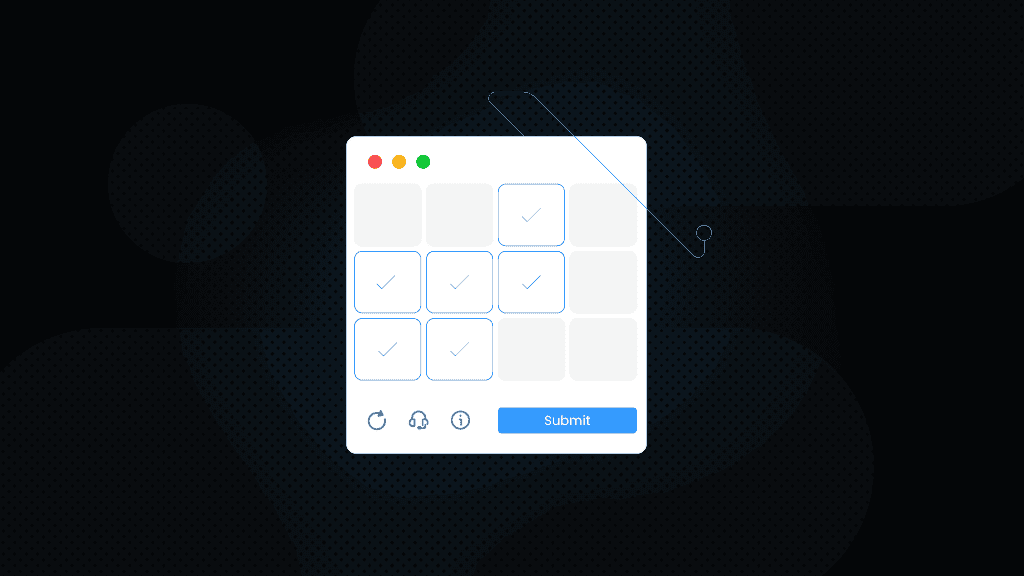How to Bypass Amazon CAPTCHAs When Scraping
Amazon CAPTCHAs – advanced anti-bot mechanisms that prevent the robots from visiting the website and slowing down its performance. Whether you're trying to buy a new book or snag that highly coveted gadget, nothing kills the thrill of online shopping quite like the dreaded security obstacle in the form of random numbers and letters, the challenge of choosing all the motorbikes, or choosing which item is not from the same category as the rest of them.
Coming in various forms and sizes, CAPTCHAs can also prevent the bots from collecting valuable data that fuels eCommerce business growth. If you're looking for ways to avoid Amazon CAPTCHAs, implementing specific strategies can help you bypass this frustrating barrier and enhance your shopping experience.
This article will delve into the concept of CAPTCHAs and equip you with effective strategies to shop hassle-free on Amazon.

Martin Ganchev
Oct 10, 2024
5 min read

Proven strategies to bypass Amazon CAPTCHAs
While it might be an annoying challenge, there are strategies you can employ to avoid them. Here are a few effective ways to bypass Amazon CAPTCHAs:
- Regularly clearing browser cookies – clearing your cookies helps reset your online footprint, lowering the risk of triggering CAPTCHA prompts. This also enhances your online privacy by removing stored data that can be used to track your behavior.
- Using a proxy for different IP addresses – utilizing a proxy for web scraping helps you route your internet traffic through different IPs, making it less likely for Amazon's systems to flag your activity and trigger CAPTCHAs.
- Use advanced solutions like Site Unblocker or eCommerce Scraping API to streamline your data extraction process while bypassing various restrictions.
How do CAPTCHAs work?
Now, let's take a closer look at the intricacies of this security feature. CAPTCHAs, an acronym for Completely Automated Public Turing test to tell Computers and Humans Apart, is a website gatekeeper to differentiate between human users and automated bots.
In the context of Amazon, CAPTCHAs play a crucial role in thwarting potential bot attacks that could overwhelm the servers, thus safeguarding the shopping experience for legitimate customers.
It's fascinating to note that the concept of CAPTCHAs was first introduced in the late 1990s as a response to the increasing concerns about automated programs gaining unauthorized access to online platforms.
Over the years, CAPTCHAs have evolved into various forms, ranging from image recognition tasks to text-based challenges, all designed to assess the user's human authenticity.
Why does Amazon use CAPTCHAs?
Amazon's adoption of CAPTCHAs as a security measure aligns with its commitment to combat:
- Spam
- Fraudulent activities
- Potential breaches on its platform
By using CAPTCHA challenges, Amazon reinforces customer trust by creating a secure online environment and providing seamless shopping experiences. Amazon's proactive approach to leveraging CAPTCHAs highlights its dedication to cybersecurity and user protection in the ever-evolving digital landscape.
The impact of Amazon CAPTCHAs
While Amazon CAPTCHAs intend to ensure security, their implementation can affect the user experience.
CAPTCHAs can be frustrating, time-consuming, and repetitive. Imagine having to squint at blurry images or decipher distorted text multiple times just to prove you're human. Not exactly the smooth online shopping experience we all desire.
Moreover, CAPTCHAs can act as a barrier for users with disabilities, making accessibility a challenge. This can alienate a significant portion of Amazon's customer base and hinder inclusivity.
However, advancements like audio CAPTCHAs for visually impaired users and checkbox CAPTCHAs aim to make the process more user-friendly while maintaining security.
Despite their impact on user experience, CAPTCHAs play a vital role in maintaining Amazon's security. They act as a shield, protecting against automated bots that can:
- Overwhelm servers
- Attempt fraudulent transactions
- Harvest sensitive information
Additionally, by preventing bots from carrying out malicious activities, CAPTCHAs contribute to a safer and more trusted online marketplace, reinforcing Amazon's strong reputation in eCommerce.
Best practices for accessing Amazon
While avoiding Amazon CAPTCHAs is the ultimate goal, it's essential to adopt best practices as a responsible Amazon user. These tips will keep you on the right side of security measures and enhance your overall online security.
#1 Maintaining a consistent login routine
By logging in from the same device and using the same browser, you establish a pattern of behavior that reduces the likelihood of triggering CAPTCHA prompts. Avoid frequent logins from multiple devices and browsers to minimize CAPTCHA encounters.
#2 Enabling two-factor authentication
Enable two-factor authentication for an added layer of security. This extra step during login can significantly reduce unauthorized access and lower the chances of being flagged by CAPTCHA systems.
#3 Avoiding suspicious browsing behavior
Amazon's algorithms detect suspicious browsing patterns. Rapid clicks, erratic navigation, or frequent password resets can raise red flags and increase the likelihood of triggering a CAPTCHA.
By adopting a calm and measured approach to browsing, you'll reduce CAPTCHA interruptions. Additionally, be cautious of clicking on links from unknown sources to avoid compromising your device's security.
Dealing with Amazon CAPTCHAs
Despite your best efforts, there may be times when Amazon CAPTCHAs are unavoidable. Here's how to deal with them effectively.
When faced with Amazon CAPTCHAs, stay calm and follow the prompts carefully. Take your time to solve the challenges, whether it's selecting the correct images or deciphering text. It's just a small hurdle in your shopping journey.
If you're constantly bombarded with CAPTCHA prompts, it might be time to reach out to Amazon's support team. They are well-equipped to assist and resolve underlying issues that may be causing the CAPTCHAs. Don't hesitate to contact them for guidance and support.
Wrapping up
While Amazon CAPTCHAs are essential security measures to protect users, they can be a true hassle. By understanding their purpose and implementing these strategies, you can minimize disruptions and enjoy a smoother, more secure shopping experience.
Proxies play a crucial role in overcoming CAPTCHAs by masking and rotating your IP address, making it harder for Amazon’s systems to detect and flag automated activity. This allows you to browse or use an Amazon scraper to extract publicly available data without frequent interruptions, ensuring consistent access to the platform
About the author

Martin Ganchev
VP Enterprise Partnerships
Martin, aka the driving force behind our business expansion, is extremely passionate about exploring fresh opportunities, fostering lasting relationships in the proxy market, and, of course, sharing his insights with you.
All information on Decodo Blog is provided on an as is basis and for informational purposes only. We make no representation and disclaim all liability with respect to your use of any information contained on Decodo Blog or any third-party websites that may belinked therein.